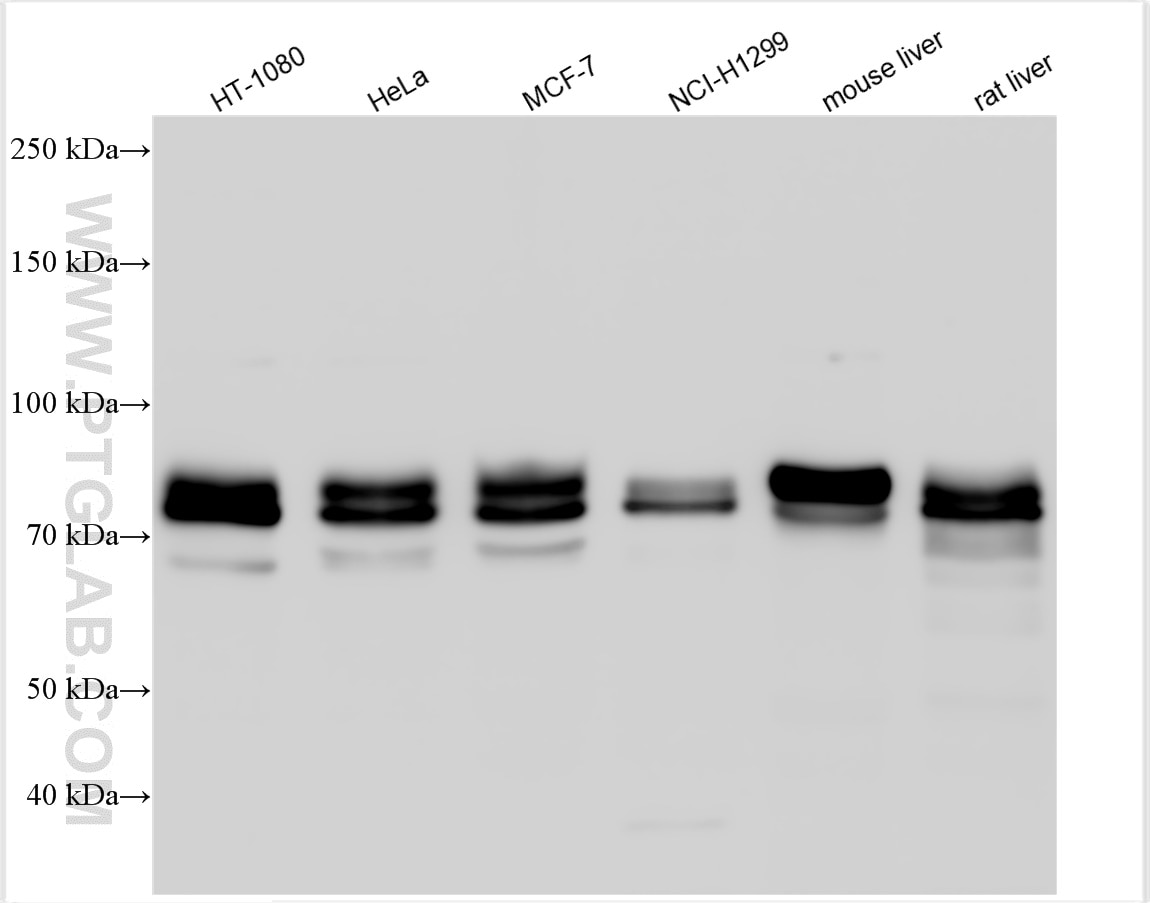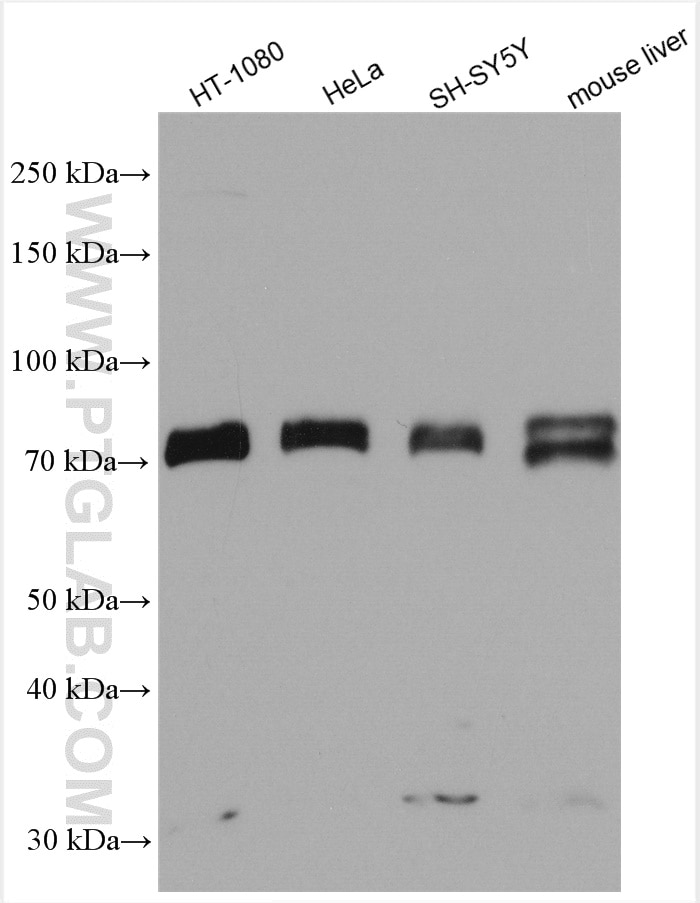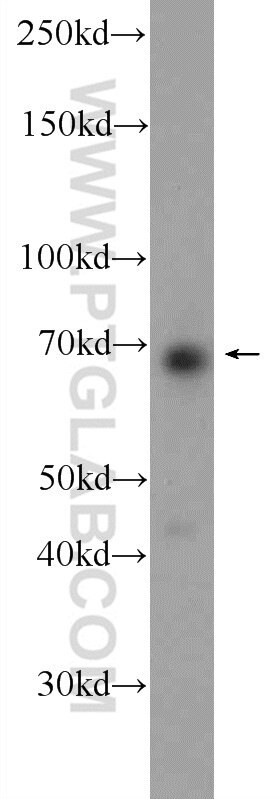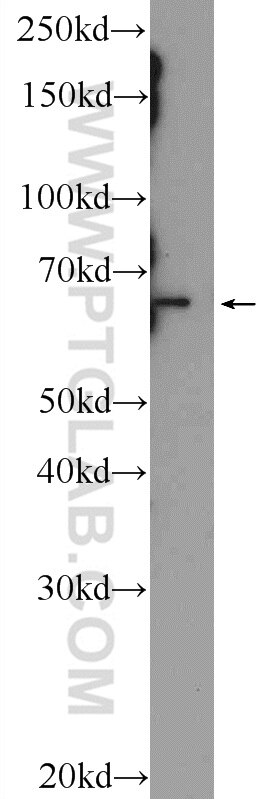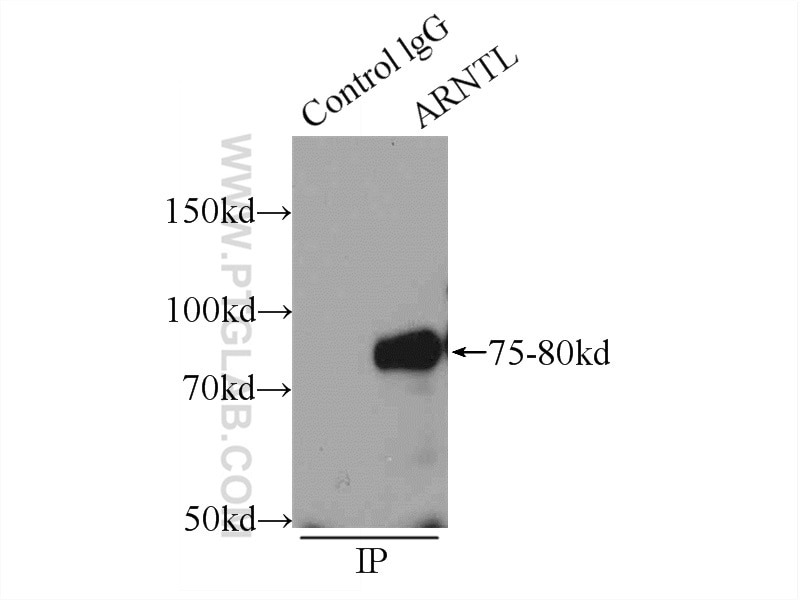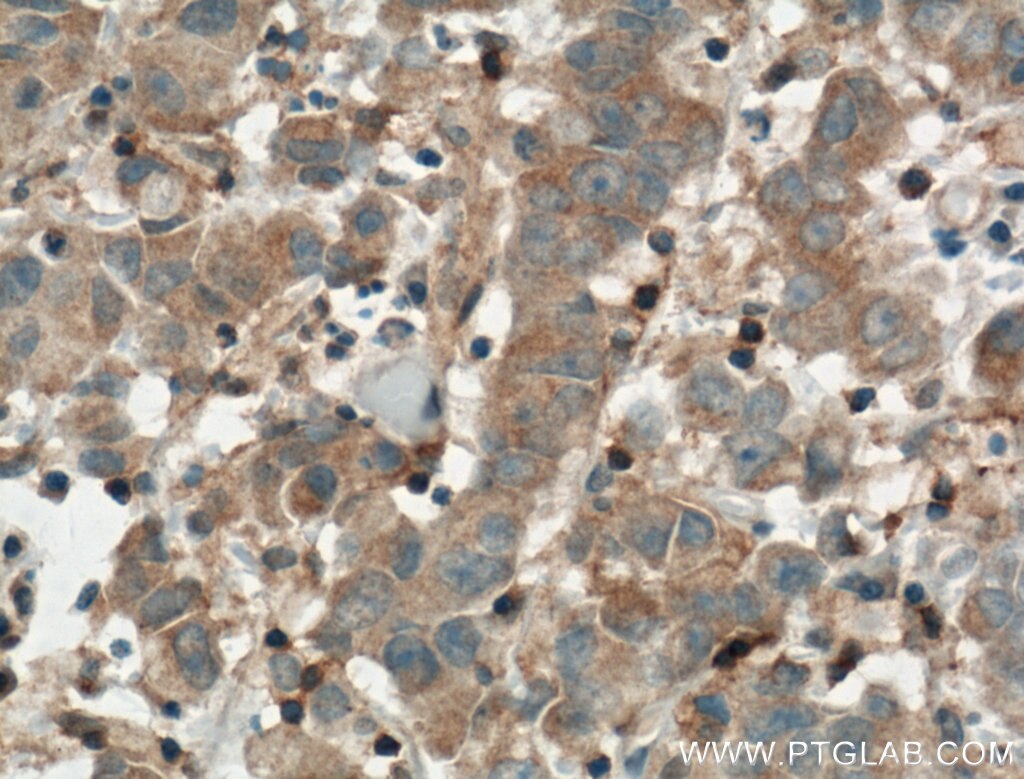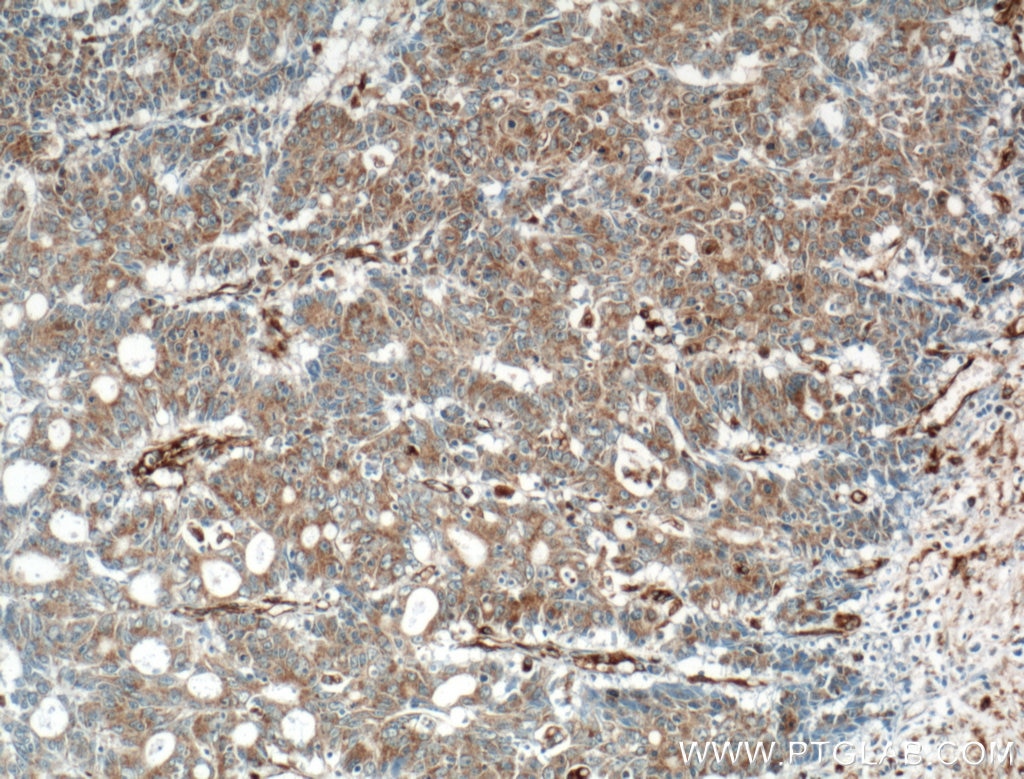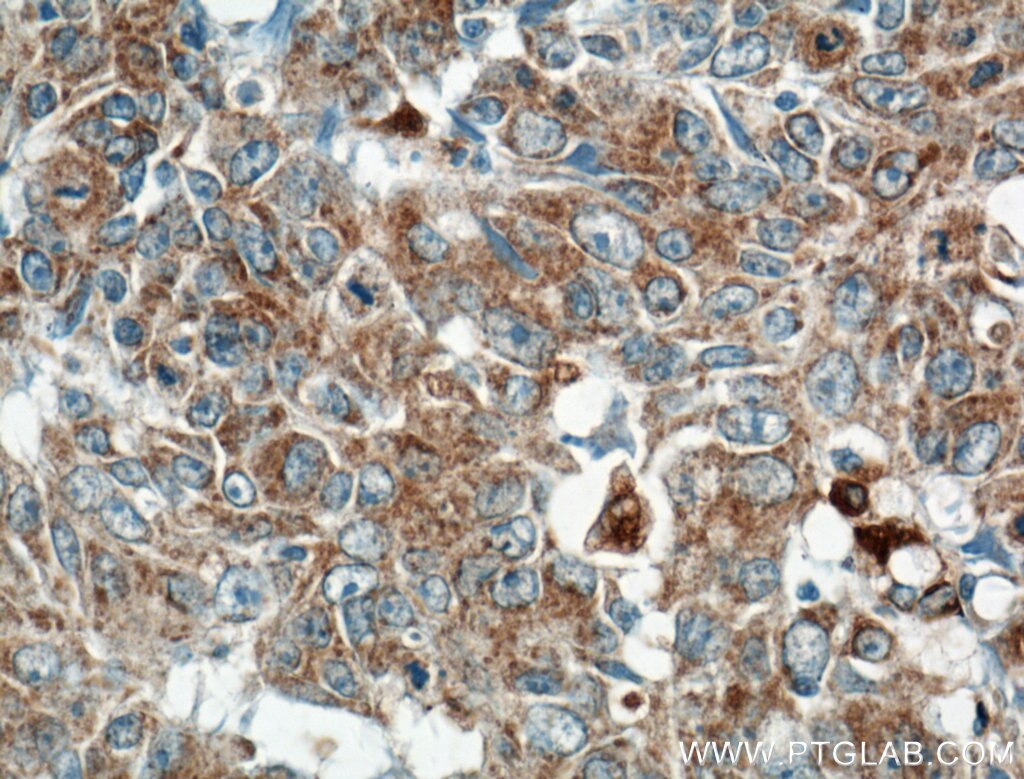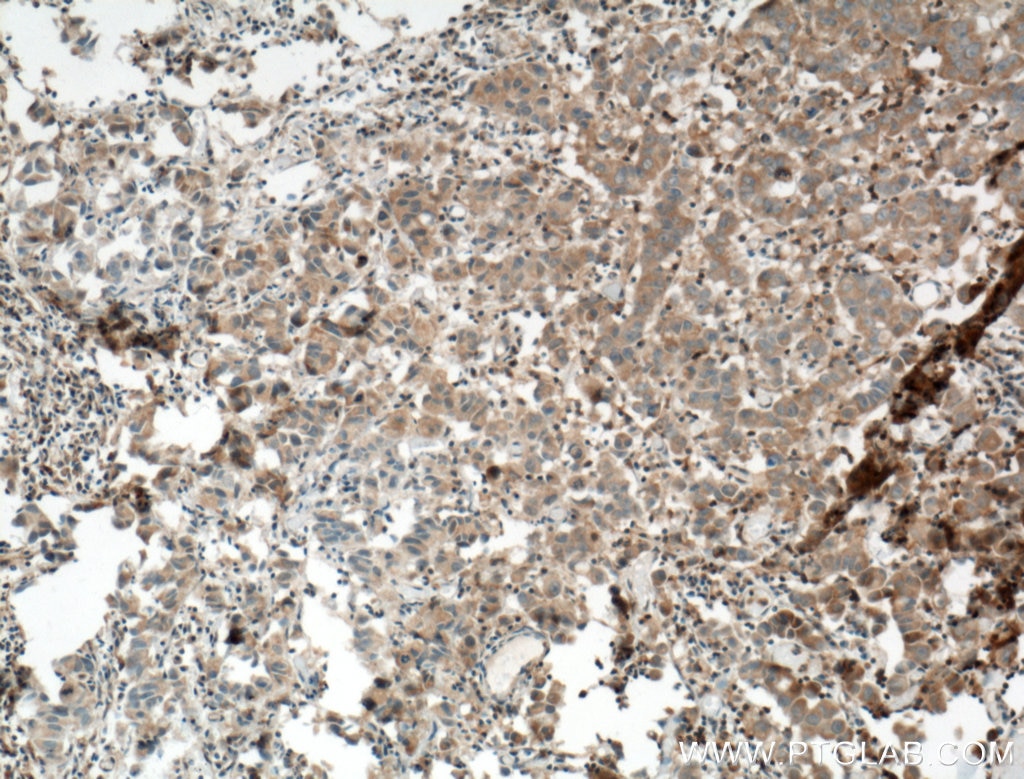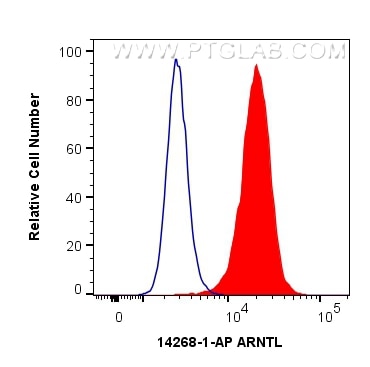- Featured Product
- KD/KO Validated
ARNTL Polyklonaler Antikörper
ARNTL Polyklonal Antikörper für FC, IHC, IP, WB, ELISA
Wirt / Isotyp
Kaninchen / IgG
Getestete Reaktivität
human, Maus, Ratte
Anwendung
WB, IP, IHC, IF, FC, CoIP, ChIP, ELISA
Konjugation
Unkonjugiert
Kat-Nr. : 14268-1-AP
Synonyme
Galerie der Validierungsdaten
Geprüfte Anwendungen
| Erfolgreiche Detektion in WB | HT-1080.Zellen, 3T3-L1-Zellen, HeLa-Zellen, Mauslebergewebe, MCF-7-Zellen, NCI-H1299-Zellen, Rattenlebergewebe, SH-SY5Y-Zellen |
| Erfolgreiche IP | HeLa-Zellen |
| Erfolgreiche Detektion in IHC | humanes Prostatakarzinomgewebe, humanes Kolonkarzinomgewebe Hinweis: Antigendemaskierung mit TE-Puffer pH 9,0 empfohlen. (*) Wahlweise kann die Antigendemaskierung auch mit Citratpuffer pH 6,0 erfolgen. |
| Erfolgreiche Detektion in FC | HeLa-Zellen |
Empfohlene Verdünnung
| Anwendung | Verdünnung |
|---|---|
| Western Blot (WB) | WB : 1:2000-1:10000 |
| Immunpräzipitation (IP) | IP : 0.5-4.0 ug for 1.0-3.0 mg of total protein lysate |
| Immunhistochemie (IHC) | IHC : 1:50-1:500 |
| Durchflusszytometrie (FC) | FC : 0.40 ug per 10^6 cells in a 100 µl suspension |
| It is recommended that this reagent should be titrated in each testing system to obtain optimal results. | |
| Sample-dependent, check data in validation data gallery | |
Veröffentlichte Anwendungen
| KD/KO | See 7 publications below |
| WB | See 38 publications below |
| IHC | See 12 publications below |
| IF | See 5 publications below |
| CoIP | See 1 publications below |
| ChIP | See 4 publications below |
Produktinformation
14268-1-AP bindet in WB, IP, IHC, IF, FC, CoIP, ChIP, ELISA ARNTL und zeigt Reaktivität mit human, Maus, Ratten
| Getestete Reaktivität | human, Maus, Ratte |
| In Publikationen genannte Reaktivität | human, Maus, Ratte |
| Wirt / Isotyp | Kaninchen / IgG |
| Klonalität | Polyklonal |
| Typ | Antikörper |
| Immunogen | ARNTL fusion protein Ag5586 |
| Vollständiger Name | aryl hydrocarbon receptor nuclear translocator-like |
| Berechnetes Molekulargewicht | 69 kDa |
| Beobachtetes Molekulargewicht | 69-75 kDa |
| GenBank-Zugangsnummer | BC041129 |
| Gene symbol | ARNTL |
| Gene ID (NCBI) | 406 |
| Konjugation | Unkonjugiert |
| Form | Liquid |
| Reinigungsmethode | Antigen-Affinitätsreinigung |
| Lagerungspuffer | PBS mit 0.02% Natriumazid und 50% Glycerin pH 7.3. |
| Lagerungsbedingungen | Bei -20°C lagern. Nach dem Versand ein Jahr lang stabil Aliquotieren ist bei -20oC Lagerung nicht notwendig. 20ul Größen enthalten 0,1% BSA. |
Hintergrundinformationen
BMAL1, a basic helix-loop-helices with Per-Arnt-Sim (PAS) domain transcription factor, is one of components that has core clock function in mammals. It form a heterodimer with CLOCK, and induce the transcription of target genes by binding to E-box elements within their promoter regions. And this transcription is inhibited in a feedback loop by PER, and also by CRY proteins.Also BMAL1 is a key player in the regulation of metabolism, playing a role in adipogenesis and in the control of glucose and triglycerides levels.
Protokolle
| Produktspezifische Protokolle | |
|---|---|
| WB protocol for ARNTL antibody 14268-1-AP | Protokoll herunterladen |
| IHC protocol for ARNTL antibody 14268-1-AP | Protokoll herunterladen |
| IP protocol for ARNTL antibody 14268-1-AP | Protokoll herunterladen |
| FC protocol for ARNTL antibody 14268-1-AP | Protokoll herunterladen |
| Standard-Protokolle | |
|---|---|
| Klicken Sie hier, um unsere Standardprotokolle anzuzeigen |
Publikationen
| Species | Application | Title |
|---|---|---|
Nat Commun The tight junction protein TJP1 regulates the feeding-modulated hepatic circadian clock. | ||
Sci Total Environ Metastatic effects of perfluorooctanoic acid (PFOA) on Drosophila melanogaster with metabolic reprogramming and dysrhythmia in a multigenerational exposure scenario | ||
Theranostics Circadian Clock Gene Bmal1 Regulates Bilirubin Detoxification: A Potential Mechanism of Feedback Control of Hyperbilirubinemia. | ||
Environ Pollut Exogenous melatonin protects preimplantation embryo development from decabromodiphenyl ethane-induced circadian rhythm disorder and endogenous melatonin reduction. | ||
Int J Mol Sci Piperine Improves Lipid Dysregulation by Modulating Circadian Genes Bmal1 and Clock in HepG2 Cells.
|
